Spring tufa, travertine and other formations 🢔 Springs 🢔 Geological wonders 🢔 Categories of wonders
Wonder
Hammam Meskhoutine (Hammam Meskoutine)
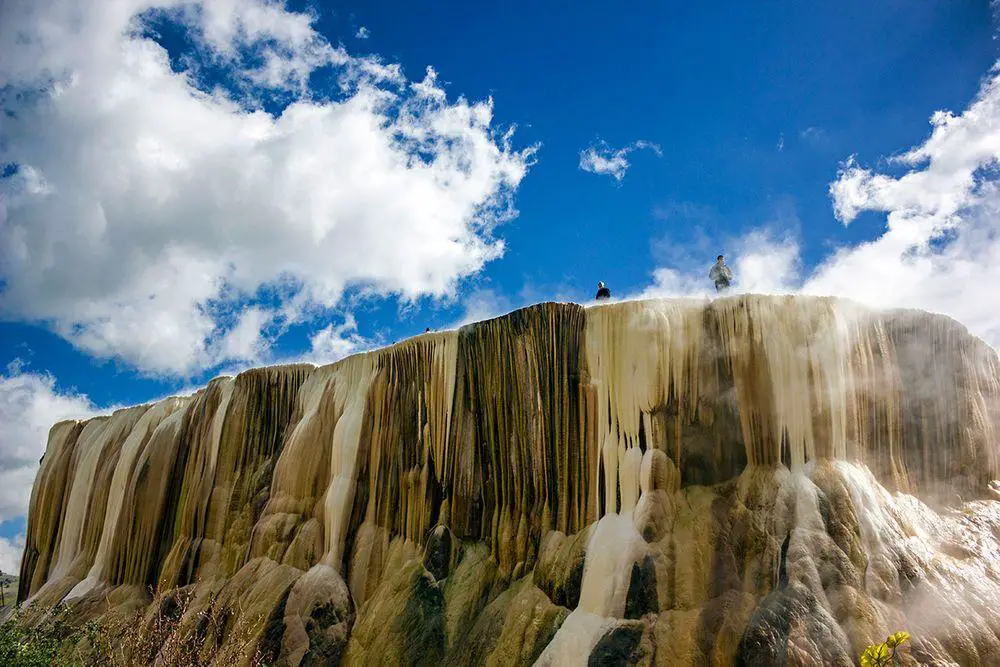
 In short
In short
The amazing Hammam Meskhoutine springs are well known since the antiquity. These hot springs have formed numerous amazing travertine formations including approximately 30 m tall mound with beautiful rimstone pools and petrified waterfalls.
 45.3%
45.3%
GPS coordinates
Location, address
Name in Arabic
Alternate names
Flow rate
Temperature of water
Map of the site
If you see this after your page is loaded completely, leafletJS files are missing.
 In detail
In detail
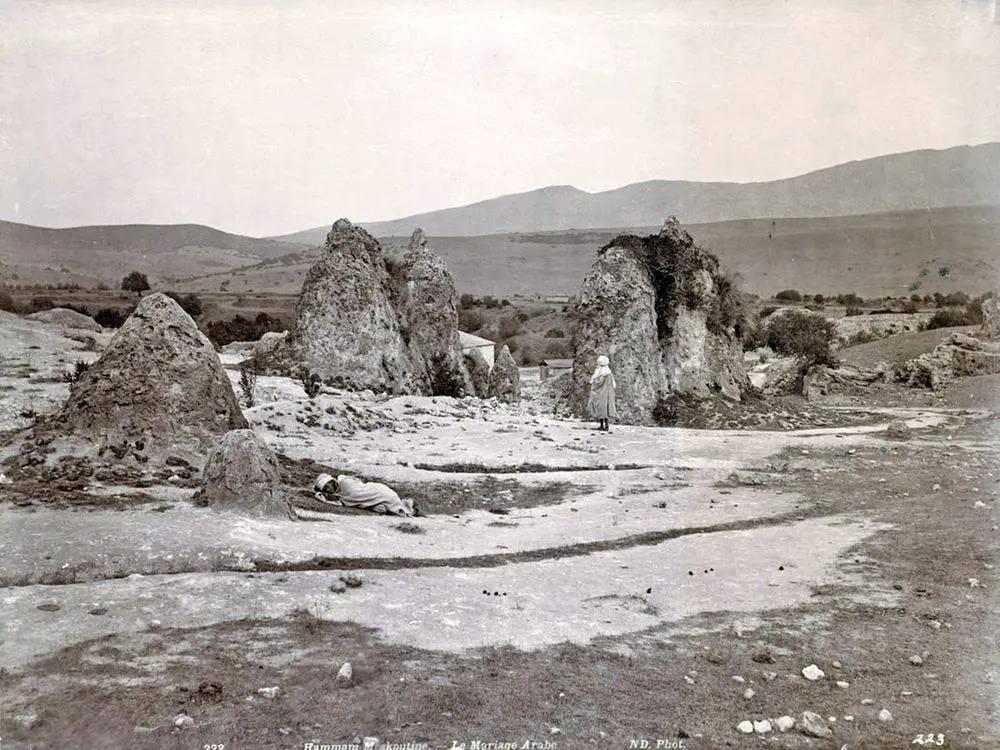
Legend
According to an ancient legend which might have its origins in Pre-Islamic times, here took place dramatic events.
Once upon a time here lived a rich and influential king Ali. This king had a gorgeous sister Ourida, the most beautiful woman ever seen. As the king looked for a wife, he could not find any other for his liking except for his own sister. Many refused to come to this wedding and many people escaped from the village where the wedding took place. Nevertheless, there were people who came and even a priest was there to marry them.
As the wedding started, a terrible earthquake took place and demons came out from the underworld. When the trembling and thunder ended, villagers returned home and saw in horror that Ourida and Ali as well as the priest and other participants were petrified – turned in the tufa cones now seen to the east from the main travertine formation. Thus the place got its name Hammam Meskhoutine – "bath of the damned ones".
Description
In spite of this gruesome story the area around Hammam Meskhoutine is peaceful, pastoral, and green. These springs have been known since antiquity and in Roman times there was a resort named Aquae Thiblitanae.
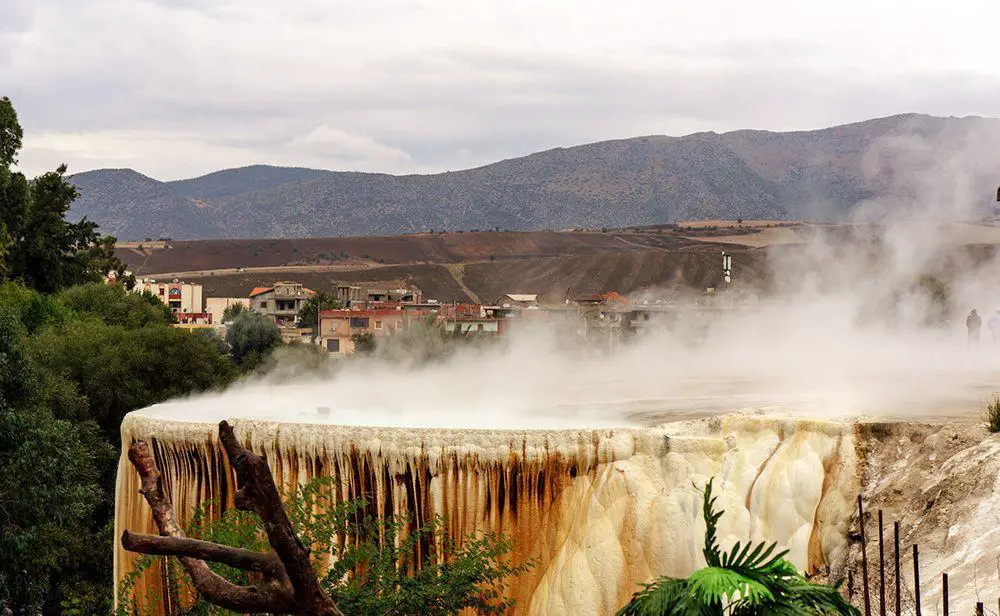
Here over some 6 km long distance along the right bank of Chédakha river are scattered numerous thermal springs.
Most impressive group of springs has formed enormous travertine mound. Powerful springs still flow from the top of this approximately 30 m tall mound with flattened top. On the sides of this mound have formed smaller rimstone pools. Travertine for most part is bright white but there are many places where the iron compounds and microorganisms have colored the travertine in various shades of red, orange and brown.
Most impressive is the enormous travertine wall which rises 30 m above the Chédakha river.
Temperature of water in these springs is high – around 96° C. Sometimes it is erroneously declared that these springs are among the hottest in the world but this is not exactly true – there are numerous springs around the world which have similar and higher temperature.
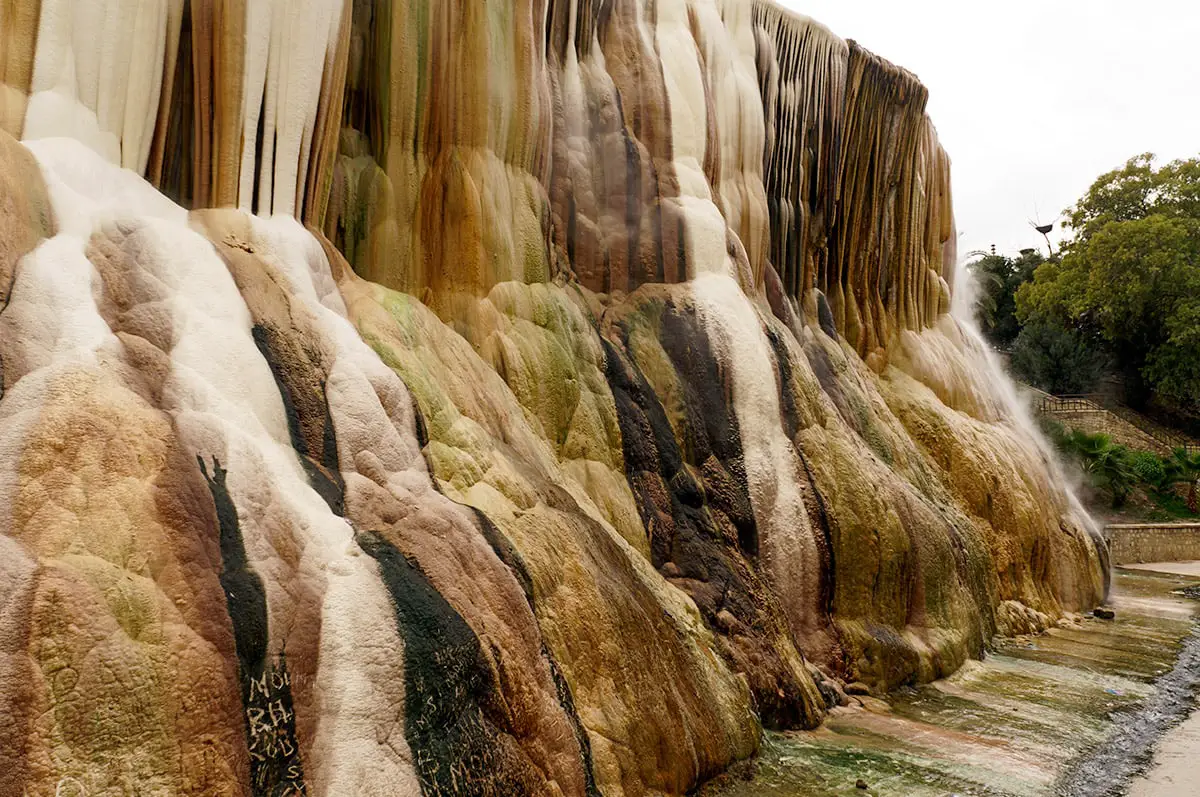
Water in the springs has rather low mineralization, with low levels of lime, chlorine and some iron salts.
Around the main travertine formation, mainly to the east from the main travertine block is located a group of more than 100 tufa pyramids – the "petrified wedding guests". The tallest are 4 – 5 m high. These pyramids also have been formed by thermal waters.
Interesting formations are also several travertine trenches surrounded by walls which lead towards the Chédakha river – mainly to the north from the main travertine formation. These trenches have been formed by lime-rich thermal water flowing towards the river and precipitating the lime along its way. Some smaller ones are still "active" – with thermal water flowing through them. Some are older and "abandoned" by water, dry and crumbling. The most impressive are 500 m long, with 8-15 m tall walls.
 Linked articles
Linked articles
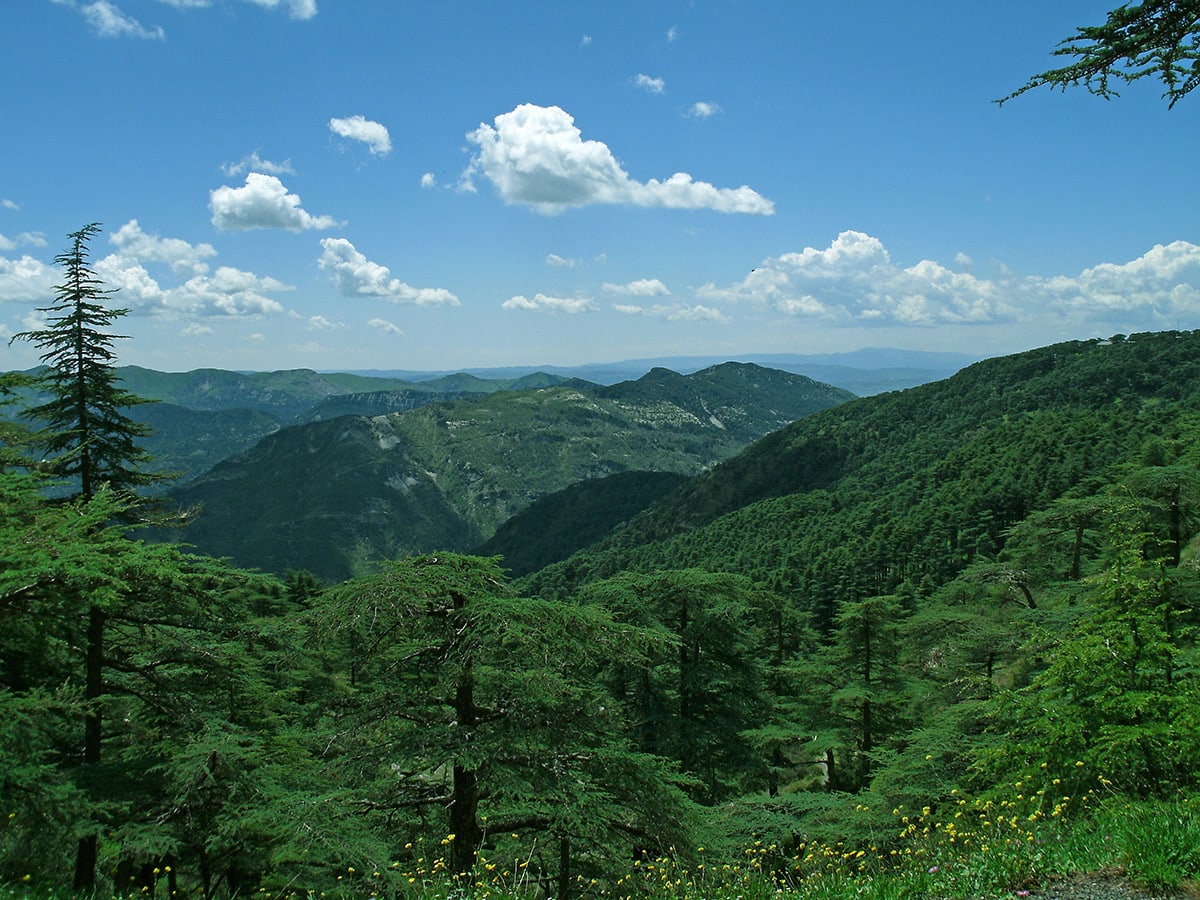
Wonders of Algeria
Algeria is the largest country in Africa. An unstable political situation prevents the development of tourism – but rest assured that there is a lot to see in this diverse country.
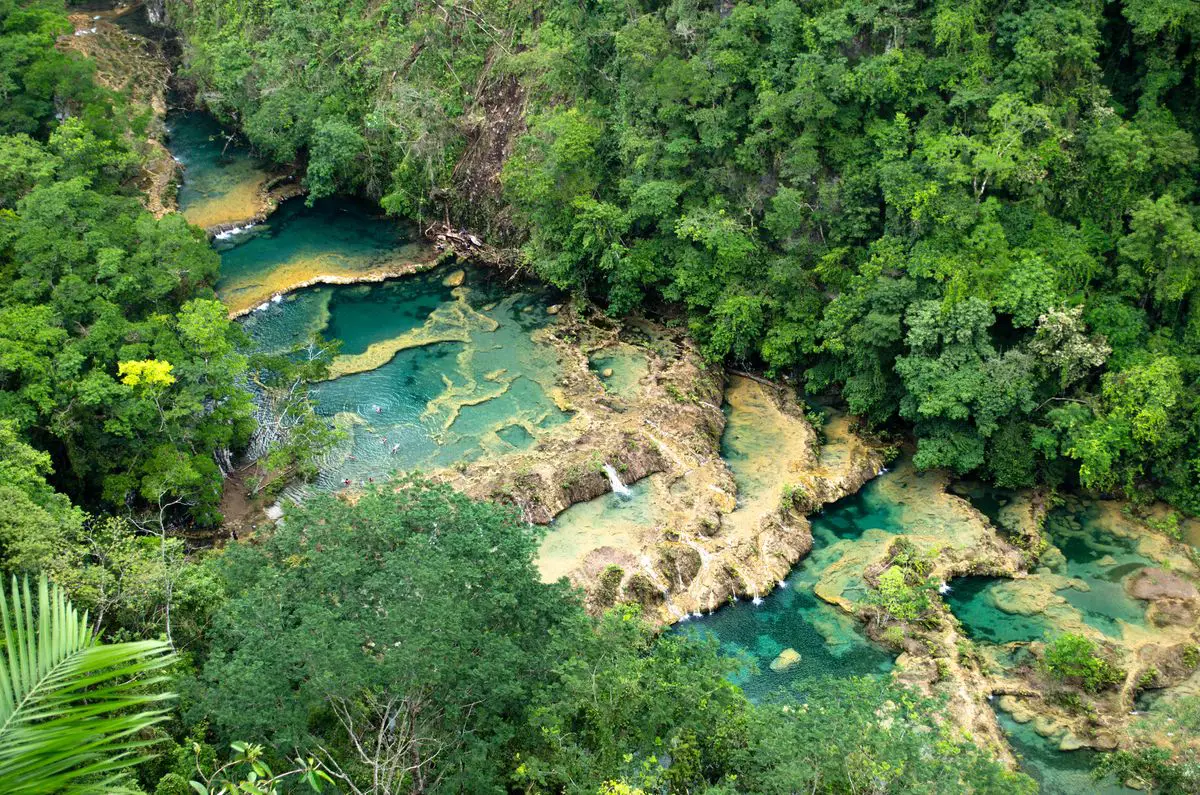
Spring tufa, travertine, and other formations
This category includes very diverse landmarks that have one thing in common: all of them are created by springs that are depositing chemical sediments – silica, carbonates, salt, or other chemical compounds.
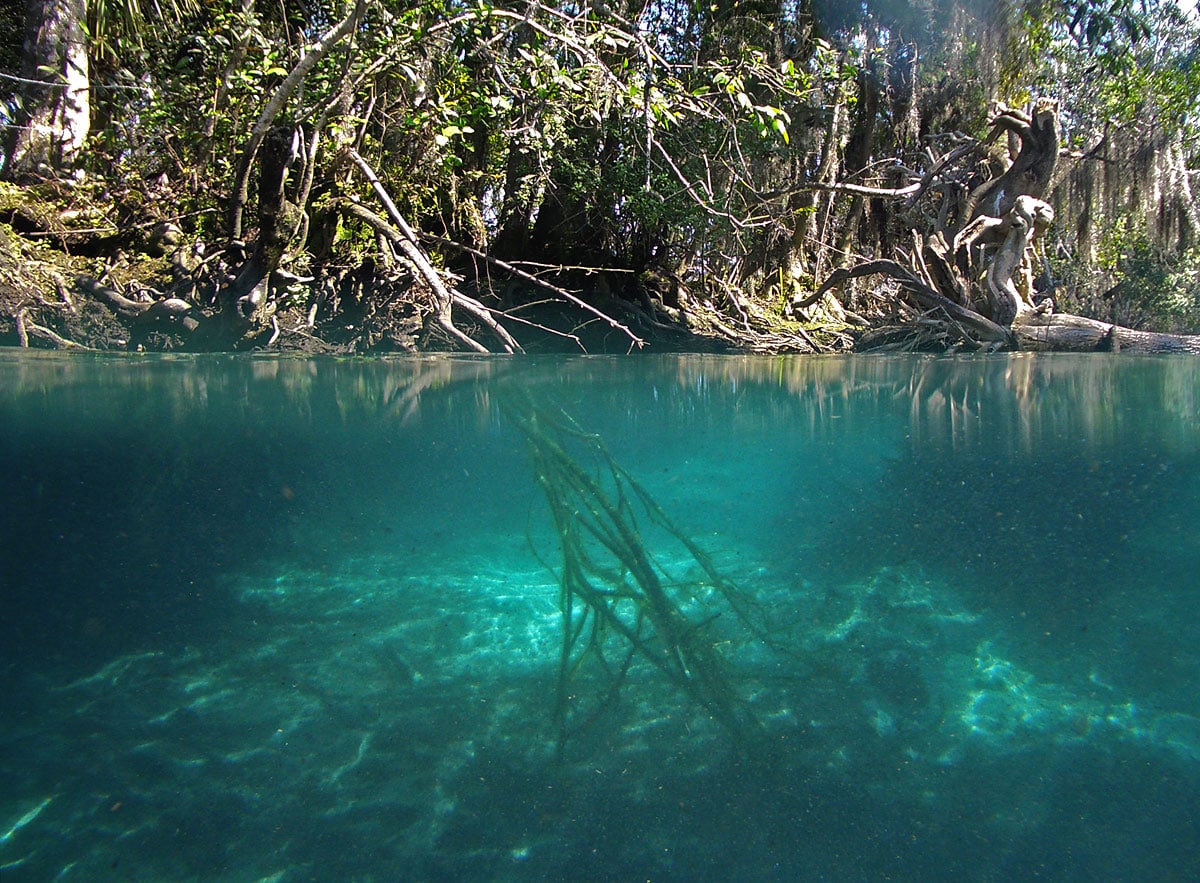
Springs
Powerful natural freshwater springs belong to the most fascinating monuments of nature. Even more exciting is the diversity of unusual springs – mineral springs, hot springs, submarine springs as well as the unusual black smokers. Especially beautiful are such natural rarities as travertine, silica, or salt terraces created by warm and hot springs and, especially, geysers.
 Recommended books
Recommended books
Africa’s Top Geological Sites
Africa is home to more than the Cradle of Humankind. It was the core of the ancient supercontinent Pangaea and comprises some of the oldest and most extraordinary geology on planet Earth. This detailed and colorful book features 44 of the continent’s most spectacular and interesting ‘geosites’, from Table Mountain in the south to the eroded necks and plugs of the Hoggar region in Algeria; and from the volcanic islands of the Atlantic Ocean to the continental fragments off the African east coast.
Geology of North Africa
A reference volume on the geology of North Africa, this volume deals with Egypt, Libya, Algeria, Tunisia, and Morocco. In great detail, the geology, tectonic elements, the geology of the Pan-African Shield, the Phanerozoic geological evolution, and most of the lithostratigraphic units of the five countries are described. Moreover, the petroleum geology and petroleum systems are discussed, as well as the history of geological exploration.


